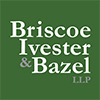 Scoping The Scope Of Easements
Scoping The Scope Of Easements
Recent developments in the law of easements may affect property owners whose land is subject to an easement or is benefited by an easement on someone else’s land. Easements come in multiple shapes and sizes, and affect almost all real property in some form or another. If the scope of an easement is not clearly defined, it may be determined by the actual use of the easement. That consequence may limit the rights of the easement holder, or conversely eliminate potential restrictions on the land that is subject to the easement. The evolving doctrine also has direct implications for the drafting of easements.
Determining the scope of an easement was the defining issue in the seminal decision Scruby v. Vintage Grapevine, Inc. (1995) 37 Cal.App.4th 697. Scruby owned an acre that was surrounded by vineyards. An easement across the vineyard provided sole access to Scruby’s property. A recorded easement deed had created the easement, and the record description specified that it was fifty-two feet wide. The width was originally intended to accommodate a subdivision, which was never actually built. Scruby’s driveway did not use the full width of the easement. The owner of the vineyard – called the “servient” property – contended that it could use the remaining width of the easement for its vines and water tanks. Scruby sued the vineyard owner, seeking to prevent it from using any of the easement area. The court sided with the vineyard owner. It found that Scruby did not need the entire 52-foot width for his driveway, and it held Scruby’s actual use of the easement area determined its scope regardless of the width described in the recorded easement deed.
Juxtapose that outcome with Cottonwood Duplexes, LLC v. Barlow (2012) 210 Cal.App.4th 1501, in which the court refused to apply the Scruby doctrine to narrow or extinguish unused and unneeded easement rights. A recorded access and utility easement benefited a large parcel. (The parcel was “appurtenant” to the easement.) The recorded easement specified that the easement was sixty feet wide. The appurtenant parcel was divided into six lots. Barlow owned one of the six lots. A developer acquired the servient property and planned to subdivide it into sixteen lots. The developer wanted to extinguish or narrow the access and utility easement, which otherwise would affect five of the lots in the planned subdivision. All the appurtenant owners agreed to extinguish the easement except Barlow. Barlow had other access and utilities from a different abutting road, and he did not need the sixty-foot easement for access or utilities. The developer (actually the lender following a foreclosure) sued Barlow to extinguish or narrow the easement. The court sided with Barlow, and held that Scruby did not apply. As there otherwise was no legal authority to extinguish or reduce Barlow’s record easement rights, the court upheld the recorded rights irrespective of the changed uses.
In a case decided more recently, Rye v. Tahoe Truckee Sierra Disposal Company, Inc. (2013) 222 Cal.App.4th 84, the court did choose to limit an easement based on historical use. A recorded deed created an easement in a large parcel for a disposal company’s parking and storage of equipment. Only part of the property was paved, and the disposal company’s actual use of the parcel generally was limited to the paved areas. When the disposal company tried to use more of the parcel, the servient owner sued the disposal company to prevent its expanded use. The court sided with the servient owner, limiting the scope of the easement to the historical uses.
So what is the significance of these distinctions? In a real estate transaction that includes an easement, it behooves the buyer to confirm the scope of the easement if the description of the easement does not match the actual use and the broader scope of the description is germane to the buyer’s decision to purchase. For the landowner who has an easement over another person’s property, there may ultimately be limits on the easement based on historical use regardless of the description. For the landowner whose property is subject to an easement, it may be possible to limit the easement based on historical uses. And if an owner is creating an easement, particular attention should be paid to defining its scope.
Richard Wallace
Briscoe Ivester & Bazel LLP
155 Sansome Street, 7th Floor
San Francisco, CA 94104
Telephone: (415) 402-2700
Fax: (415) 398-5630